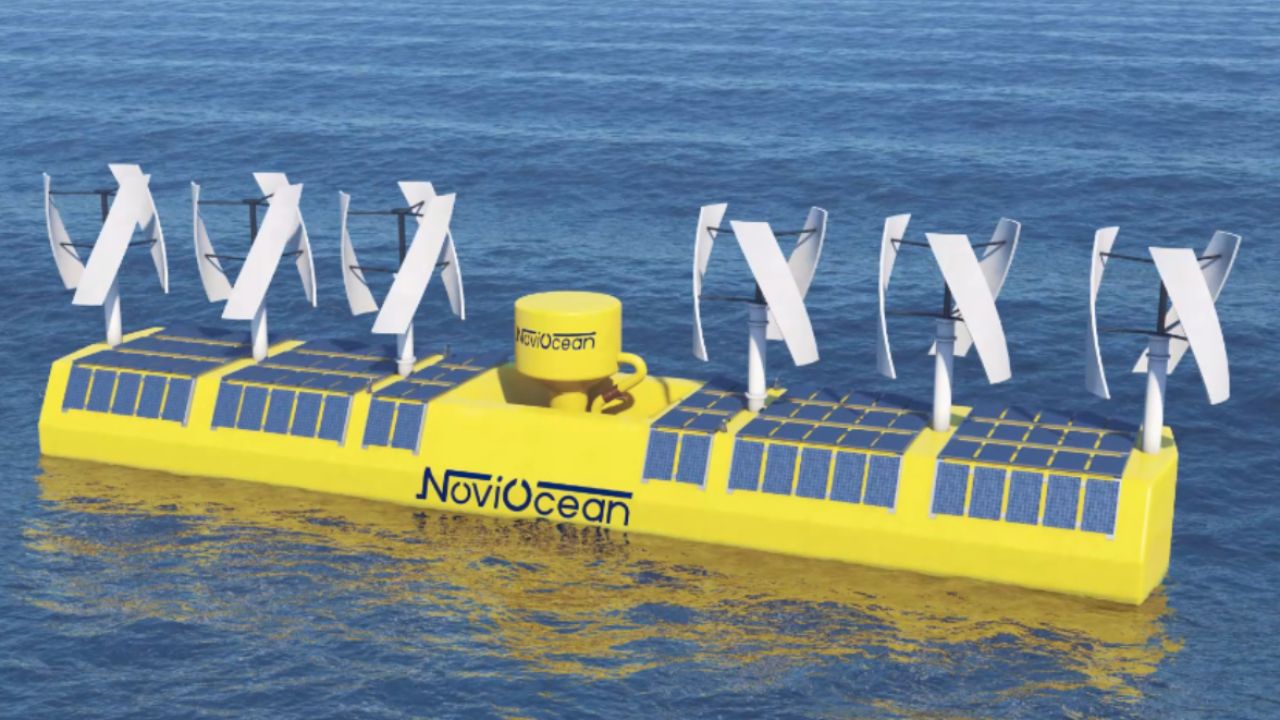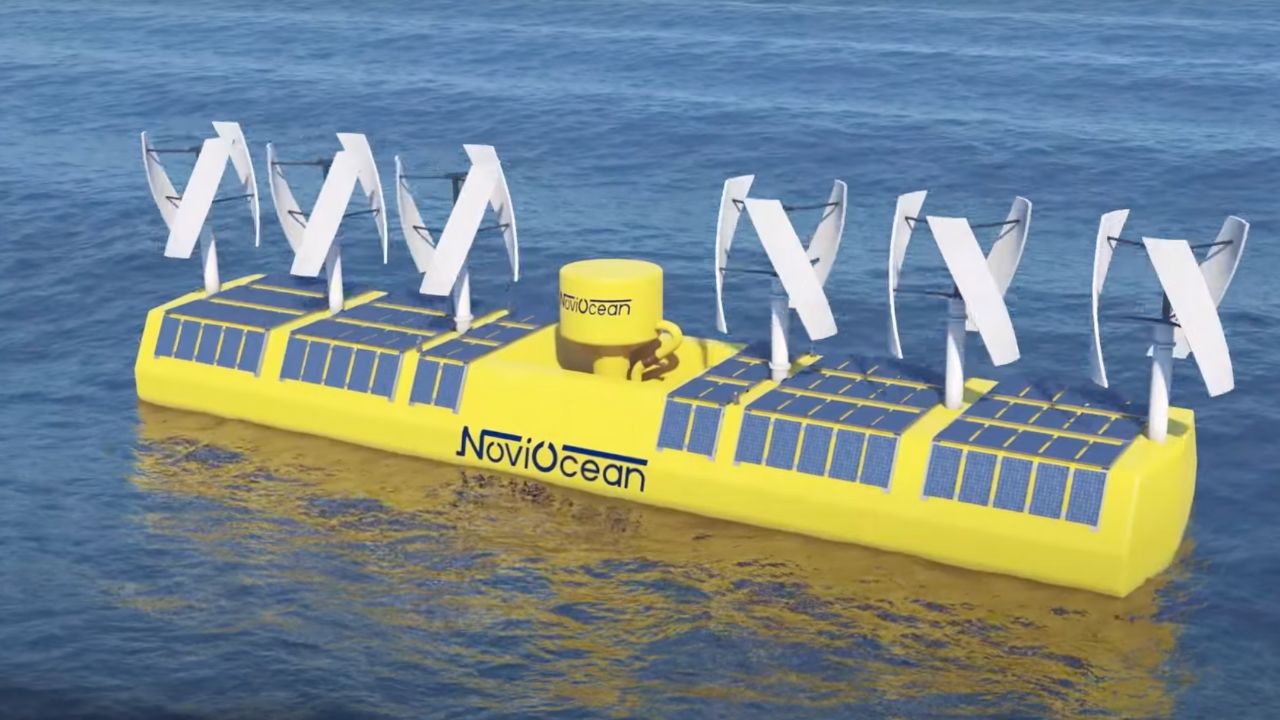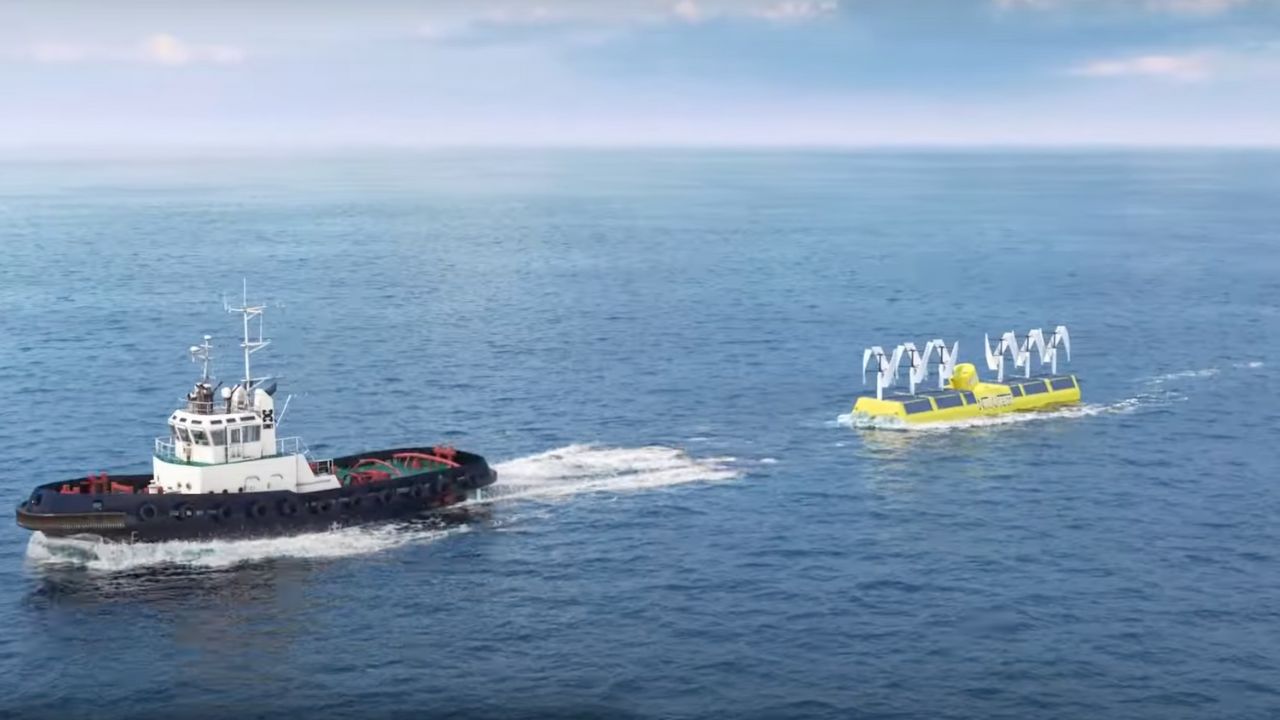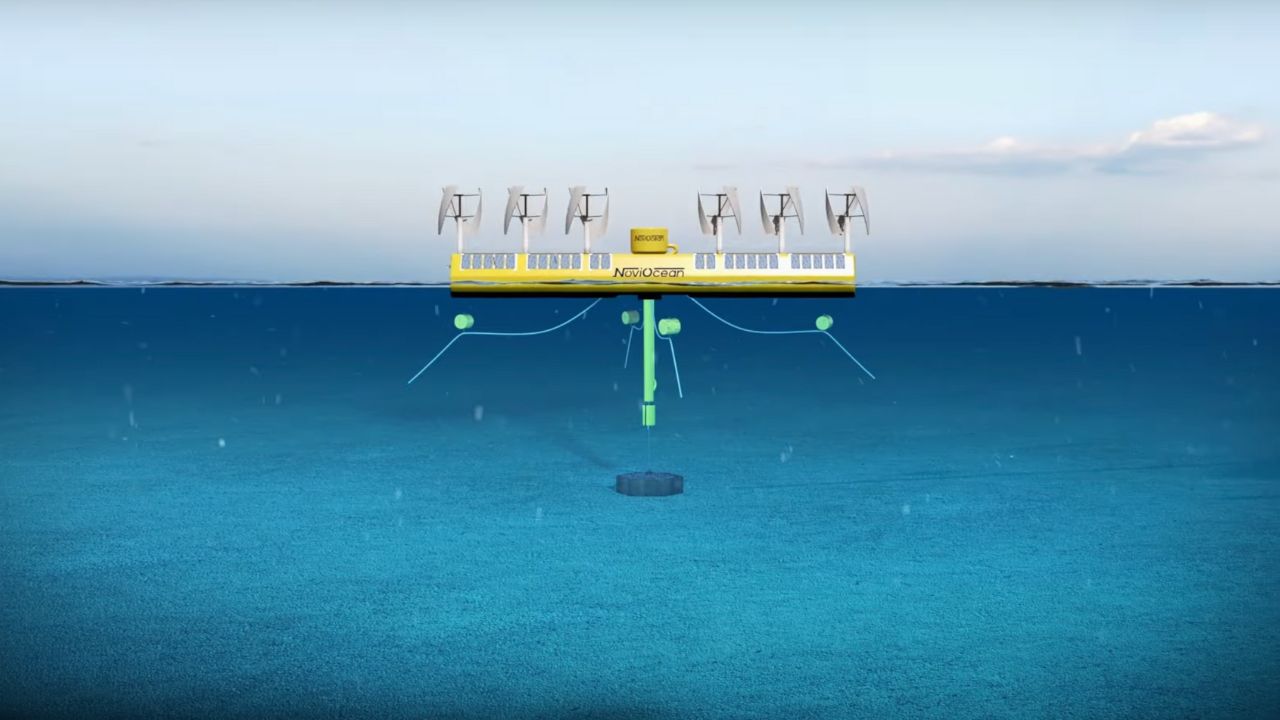Swedish company NoviOcean is making waves in the renewable energy sector with its innovative hybrid energy platform. This third-generation prototype combines wind, solar, and wave power in a single floating structure, promising up to 1 megawatt of consistent clean energy around the clock.
GET SECURITY ALERTS, EXPERT TIPS – SIGN UP FOR KURT’S NEWSLETTER – THE CYBERGUY REPORT HERE

Credit: NoviOcean
Small footprint, big impact
Despite its relatively compact size of 125 x 30 feet, this renewable energy platform packs a powerful punch. Extending just 13 feet above the water surface and 39 feet below, it’s a David among Goliaths in the world of offshore energy production.

Credit: NoviOcean
UNDERWATER KITE IS ABLE TO HARNESS THE OCEAN’S POWER FOR SUSTAINABLE ENERGY
How it works
The NoviOcean platform harnesses three different energy sources:
Solar Power: 7,535 square feet of solar panels generate up to 50 kW.
Wind Power: Six vertical-axis wind turbines (VAWTs) capture wind energy efficiently.
Wave Power: A fascinating buoyancy-driven mechanism generates up to 650 kW from wave motion.

Credit: NoviOcean
SAY GOODBYE TO DEAD BATTERIES WITH THIS PORTABLE WIND TURBINE
The wave power secret
The platform’s wave energy generator uses a clever piston system. As waves rise and fall, the platform traps air underwater, creating enormous buoyancy force. This force drives water through a turbine, generating electricity.

Credit: NoviOcean
OLD VS. NEW BACKUP POWER GENERATORS: BATTERY VS GAS
Promising performance
NoviOcean claims each full-size platform could generate about 3.5 gigawatt-hours annually, enough to power roughly 324 average US homes. With a capacity factor between 40-70%, it offers more consistent energy production than single-source renewables.

Credit: NoviOcean
The road ahead
NoviOcean has successfully tested three prototypes and is now preparing for a full-scale pilot. The company aims to have a commercial deployment by 2031-32. While the initial Levelized Cost of Energy (LCoE) is higher than established renewables, NoviOcean projects significant cost reductions as production scales up. The platform’s ability to generate power from multiple sources could prove valuable for grid stability and peak demand periods.

Credit: NoviOcean
Kurt’s key takeaways
As the world races to decarbonize and meet growing energy demands, innovations like NoviOcean’s platform could play a crucial role. Its ability to provide consistent power and maximize energy production per square foot of ocean space is particularly appealing. If NoviOcean can overcome the initial hurdles and prove the technology at scale, it could become a significant player in the offshore renewable energy market.
How do you think hybrid renewable energy solutions like NoviOcean’s platform could reshape the future of clean power generation? Let us know in the comments below.
FOR MORE OF MY TECH TIPS & SECURITY ALERTS, SUBSCRIBE TO MY FREE CYBERGUY REPORT NEWSLETTER HERE



2 comments
I think this is an interesting concept. The issues with solar panels, wind mill turbines, are their sustainability due to breakdowns, replacement costs at the end of life, use of rare earth materials that are not recycled, and that their designs are at an early stage that do not solve these problems. We see many of the existing projects overseas being abandoned to be replaced with conventional generations because of their unreliability. My next question is what the cost per kilowatt will be over their operating life. In solar farms and roof top systems the majority of the systems come from China. If so called Made in the USA systems contain much China made components and elements mined using child and forced labor around the world, should we worry if there was a conflict between China and the USA would these systems be hacked and shut down overloading our power grid and supply and second the moral issue of labor being used for the raw materials?
Small nuclear power plants have technology that’s proven over time, is safe using lower yield materials that can be recycled and are cost effective and not subject to storm damage when located and built properly. They have a long-life expectancy and can be rebuilt. Decentralization of these units within a power gride provides greater security. Fusion is not that far away since the first fusion generator that makes more energy than it uses is now in existence. The problem with Solar Panels has aways been that technically the transfer of the sun’s energy is limited by the process which makes it expensive. Real costs are hidden through subsides by government, sometimes giving utilities rate increases to their users to bury the costs. Simple proof: If you took the cost of a 2400 sq ft. residential system and put it into an S&P ETF you would find the return to pay all of your utility bills [gas, electric, water and sewer] by the end of a systems life, have your original investment back plus an additional profit! One last thing, when you go to replace the system on your roof you will find there are no more cost cutting deals including the cost of removal and junking the rare earth elements. Hydrogen extraction from water is also in development stage. The by product is oxygen from the generator that makes it and it burns cleaner than natural gas.
Will the NoviOcean platform be substituted for windmills in the ocean, so the whales and other sea creatures etc survive?